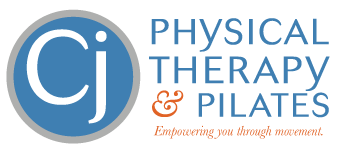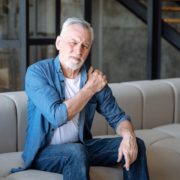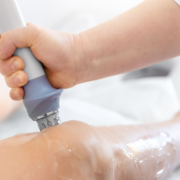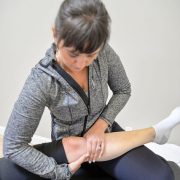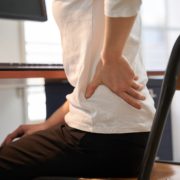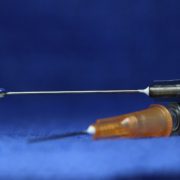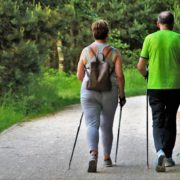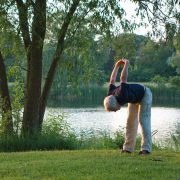Top 5 Arthritis Myths That Keep People in Pain
If you or someone you love is living with arthritis — then you already know how frustrating it can be. Daily tasks become harder, favorite activities fall by the wayside, and you may start to wonder: “Will things ever get better?”
Even worse, many people living with arthritis fall victim to misguided advice.
Let’s look at five of the most common myths about arthritis management — and shed some light on what you can actually do instead:
Myth #1: “There’s nothing you can do — it’s just part of getting older.”
This is one of the biggest and most damaging myths of all.
While it’s true that arthritis becomes more common as you get older — and it’s considered a normal part of aging — it doesn’t mean you have to live with chronic pain or disability. In fact, many people with visible (even advanced) arthritis on X-rays and MRIs are living active, healthy lives with minimal to no pain at all.
Research supports this. A 2015 study published in Arthritis & Rheumatology found that more than 30% of adults over 60 had radiographic evidence of knee osteoarthritis — but only a portion of them had symptoms. In other words, just because your joints show signs of “wear and tear” doesn’t mean you’re doomed to pain.
The real issue is how you move — and how you use your joints. Strategic exercise, strength training, and natural therapies can drastically improve your mobility and reduce pain — regardless of your age or what your imaging says.
Doing nothing, on the other hand, is one of the worst things you can do.
Myth #2: “You should rest and avoid activity to protect your joints.”
If your joints hurt, don’t move them — right? That might make sense if you have an injury that requires an initial rest and healing phase. But that’s not the case with arthritis. When you avoid movement in an arthritic joint, you actually worsen your symptoms.
Too much rest leads to stiff joints, weakened muscles, and poor circulation — all of which contribute to more pain and less function over time. Movement helps lubricate joints, strengthen muscles, and prevent further degeneration.
I’m not sure why this myth is still so common — especially when just about every major orthopedic organization (including the CDC and the Arthritis Foundation) agrees that regular, low-impact physical activity is one of the best things you can do for arthritis.
The key is doing the right kind of movement. So if you’re struggling, work with an expert who can help you figure out the proper, targeted activity your body needs. But whatever you do — don’t fall for this myth.
Myth #3: “If your joint is bone-on-bone, surgery is the only option.”
Hearing the phrase “bone-on-bone” from your doctor can feel like a death sentence for your joint. And the typical recommendation? Joint replacement surgery.
But what if I told you that “bone-on-bone” isn’t always the actual reason for your pain — and that you’ve got options beyond a major procedure like surgery?
The first thing to understand is that what shows up on your imaging (like X-rays and MRIs) doesn’t always match up with your symptoms. A 2018 study in BMJ Open found that nearly half of people with severe osteoarthritis on imaging had little to no pain. And many people with significant joint pain showed only mild arthritic changes on their images.
Translation? “Bone-on-bone” isn’t necessarily the root cause of your problem. I’ve seen many people with this diagnosis successfully avoid major surgery and keep their original parts far longer than they thought possible.
When faced with this kind of diagnosis, the best thing you can do is pause — and explore your options. Surgery will always be there if you need it. But don’t rush into it or assume it’s your only option.
Myth #4: “Cortisone shots and medications are the best way to manage arthritis.”
Cortisone shots may provide short-term pain relief for arthritis — but they don’t actually fix anything. Worse, repeated cortisone injections have been shown to damage cartilage and accelerate joint degeneration over time.
One study published in JAMA (2017) showed that patients receiving cortisone injections for knee arthritis had worse cartilage loss at two-year follow-up than those who received a saline placebo — despite experiencing no significant difference in pain relief.
NSAIDs (like Advil) and prescription pain medications can also help dull pain, but they come with side effects — and, just like cortisone, do nothing to address the root cause of your symptoms.
If you’re relying on medication or repeated cortisone shots just to get through the day — or to delay surgery — it’s time to explore options that promote natural healing instead of just masking symptoms.
Shockwave Therapy and EMTT are two non-invasive regenerative therapies that do exactly that. These cutting-edge technologies enhance your body’s natural healing processes by targeting inflammation and tissue damage at the cellular level. And while more research is still needed, promising clinical evidence suggests these therapies may actually help reverse — or significantly delay — the progression of arthritis.
Do your own research — and be open to natural, forward-thinking treatment options that support your long-term joint health.
Myth #5: “Arthritis means you’ll never get back to the activities you love.”
This is one of the most heartbreaking myths — and it’s simply not true.
I’ve worked with countless clients who believed their days of hiking, gardening, traveling, or playing with grandkids were behind them — only to regain full function and freedom after following a personalized treatment plan.
And while surgery sometimes is the best option — especially if you’ve waited until your arthritis has become advanced — there’s a lot you can do to improve your outcome. Working with a specialist to build strength and prescribe targeted movement can make recovery faster and easier.
Plus, emerging research shows that using regenerative therapies like Shockwave and EMTT both before and after surgery may help accelerate healing and improve long-term outcomes.
Managing arthritis is absolutely possible when you take a natural, proactive, and personalized approach. You just need the right plan — and the right team to guide you.
Final Thoughts:
Arthritis is real — but don’t let myths and outdated advice keep you stuck. If you’re not sure where to start — or feel like you’ve already tried everything — speak with someone who specializes in mechanical pain and natural joint care. Often, the most effective solutions are the ones no one has told you about yet.
Dr. Carrie Jose, Physical Therapy Specialist, and Mechanical Pain Expert, owns CJ Physical Therapy & Pilates in Portsmouth, NH, and writes for Seacoast Media Group. If local to Portsmouth, NH, and looking for help – request a FREE Discovery Visit with one of her Specialists by CLICKING HERE.
